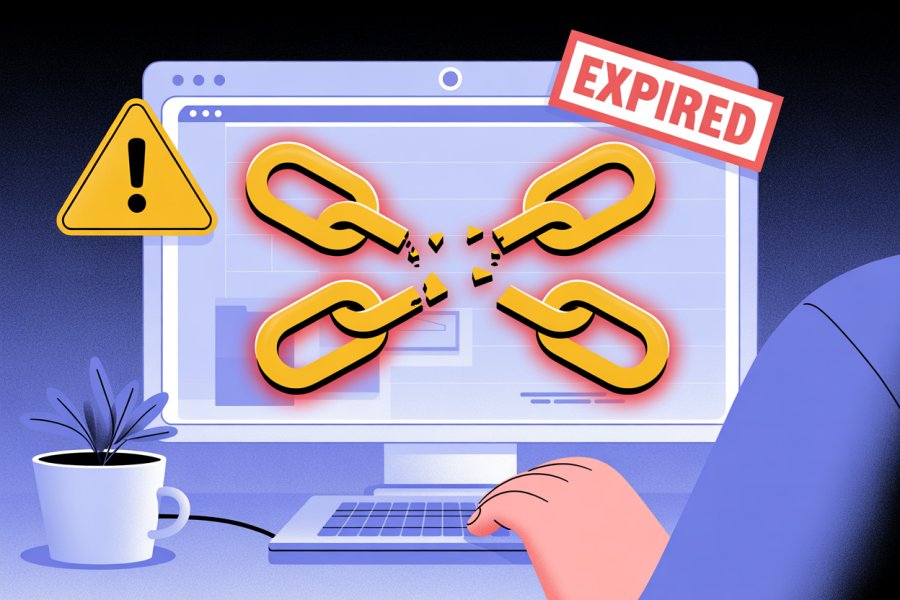
Are temporary backlinks from online marketplaces genuinely harmless, or do they secretly sabotage your SEO over time? Many website owners chase quick gains through automated tools, link farms, or rented domains promising rapid increases in Authority and Rankings. But these short-lived links often vanish within weeks, erasing any temporary boosts and destabilizing your site’s trustworthiness. Search engines have become adept at detecting manipulative schemes, risking penalties that can undo any superficial progress. The real challenge lies in building durable, relevant backlinks through genuine content and authentic relationships—long-term assets that withstand algorithm shifts. Are short-term fixes worth the hidden risks they carry? This revealing guide underscores the importance of patience, quality, and strategy—empowering you to develop a resilient backlink profile that fuels sustained growth rather than fleeting spikes.

Unveiling the Role of Temporary Backlinks in SEO Strategy
In the world of SEO, backlinks remain one of the most influential factors for improving a website’s authority and visibility. They act like votes from other sites, signaling to search engines that your content is trustworthy and worth ranking higher. But not all backlinks are created equal. Some are carefully earned over time through valuable content and genuine relationships, while others are generated quickly through shortcuts. Recently, the focus has shifted toward understanding these short-lived links—often called temporary backlinks—and their true impact on your long-term SEO health.
Temporary backlinks are typically produced using methods that prioritize speed over stability. Many SEO vendors rely on automated tools, link farms, or rented domains to flood websites with links in a short period. These links are often placed on low-quality or irrelevant sites, aiming to boost metrics rapidly rather than build trust. While they can cause a quick upward movement in search rankings, their lifespan tends to be very short. Once the links are removed—usually within weeks or months—the perceived authority they provided evaporates just as quickly.
This fleeting nature can be misleading. Many website owners see their rankings improve temporarily after purchasing or generating short-term links, only to watch those gains disappear when the links are taken down. This creates a cycle of short-lived boosts that don’t contribute to building a durable, natural backlink profile. Search engines are becoming increasingly adept at detecting manipulative link schemes, and relying heavily on unstable, short-term links can backfire—potentially leading to penalties or a loss of trustworthiness in the eyes of algorithms.
Understanding the difference between temporary and permanent backlinks is crucial. While quick fixes may seem tempting, they often lack relevance and authority. Search engines favor backlinks earned through genuine content and authentic relationships—those that are more likely to remain stable over time. Building a solid, lasting backlink profile takes patience but results in a more resilient online presence, capable of withstanding algorithm updates and competitive pressures.
As search engine algorithms evolve, they become better at identifying unnatural link patterns. Sites that depend on manipulative tactics like link farms or automated schemes risk penalties that can undo any short-term gains and damage their reputation long-term. Focusing on creating high-quality, relevant backlinks from reputable sources remains the best strategy for sustainable growth—one that builds authority without risking your site’s credibility.
How Temporary Backlinks Are Rapidly Created and Their Instability
Temporary backlinks are typically created through methods that prioritize speed over long-term stability. Many SEO vendors rely on automated tools, link farms, or rented domains to quickly generate a large volume of links within a short timeframe. These tools often scrape or produce links on low-quality or irrelevant sites, aiming to inflate metrics rapidly rather than build trust or relevance. The result is a sudden spike in search rankings, but the lifespan of these links is usually brief—often just a few weeks or months—before they are removed or devalued by search engines.
Link farms are a common tactic used to produce these short-lived backlinks. These networks consist of interconnected websites built solely to exchange links, creating an illusion of authority. Typically, they are established on expired or abandoned domains that retain some residual trust with search engines. Vendors frequently update or swap out links within these farms, reusing domains to maximize their utility while minimizing detection. This superficial mimicry of natural link patterns often lacks genuine engagement or relevance, making the links inherently unstable.
Private blog networks, or PBNs, also play a significant role. These are collections of websites owned by a single entity, often using expired domains with existing authority to quickly boost a site’s rankings. However, PBNs are designed primarily for rapid link placement rather than fostering real relationships or relevance. Search engines have become increasingly sophisticated at detecting PBNs, and once identified, links from these networks tend to be devalued or removed, rendering their benefits temporary.
Automated systems and schemes driven by vendors focus on fast results, promising quick increases in metrics like Domain Authority or Domain Rating. Yet, these gains are fleeting—links are often removed or updated after a short period to reuse domains or avoid detection. This cycle of rapid creation and removal means any authority gained from these links tends to vanish just as quickly, leaving little lasting value.
As search engine algorithms evolve, they become more adept at identifying manipulative link schemes. Updates like Google’s Penguin target unnatural backlinks from link farms, PBNs, or automated tools. Relying on these tactics not only risks losing rankings but can also trigger penalties that damage your site’s credibility. These unstable backlinks are unreliable and can actively harm your SEO efforts if detected, highlighting the importance of focusing on durable, relevant links instead.

The Short-Term Impact and Hidden Dangers of Temporary Backlinks
Temporary backlinks can deliver a quick surge in search rankings, but their influence on long-term SEO health is often more harmful than many realize. When these links are removed—usually after a few weeks or months—the authority they temporarily provided vanishes just as fast. This pattern of fleeting gains creates instability, making it difficult for search engines to recognize your site as a trustworthy or authoritative source over time.
Relying heavily on short-lived backlinks causes rankings to fluctuate unpredictably. When the links disappear, your site’s perceived authority drops, sometimes even below its original level. This inconsistency can confuse search engine algorithms, which prefer sites with stable, natural growth patterns. The result is a cycle of spikes and drops that hampers your overall visibility and can hinder genuine growth.
Many of these backlinks are placed on low-quality or irrelevant sites, which only amplifies the problem. Search engines have become adept at detecting unnatural link patterns—sudden influxes of links from suspicious domains often trigger algorithmic penalties. When updates like Google’s Penguin target these manipulative tactics, sites relying on unstable links risk penalties that wipe out any short-term gains and damage their reputation.
Unnatural backlinks lack the relevance and authority that come from earned, organic links. They are often on sites with little engagement or dubious histories, signaling to search engines that these links are part of manipulative schemes rather than genuine endorsements. Once detected, these links are devalued or ignored, nullifying any SEO benefit and sometimes incurring penalties.
The cycle of adding and removing these links is driven by vendors seeking to maximize their reuse of domains. This constant churn means your site’s boost is temporary, and the removal of links can be abrupt and unexpected. Such volatility creates a rollercoaster of rankings, wasting resources and undermining efforts to build a solid, long-lasting presence.
As search engine algorithms continue to evolve, reliance on unstable, manipulative link schemes becomes increasingly risky. These tactics threaten your site’s credibility and can lead to penalties that take months or even years to recover from. Focusing on acquiring high-quality, relevant backlinks—those that are naturally earned and durable—is the best way to ensure sustained SEO success.
Practical Strategies for Building Resilient, Long-Lasting Backlinks
To build an effective SEO backlink strategy, start by auditing your existing link profile using tools like Ahrefs or SEMrush. Identify any suspicious or low-quality links, especially those from irrelevant or spammy sites. Removing or disavowing these harmful links early on prevents them from dragging down your rankings and lays a cleaner foundation for future efforts. A healthy backlink profile is built on quality, so investing time in cleanup sets the stage for more sustainable growth.
Next, focus on creating genuine relationships with reputable websites in your niche. Outreach through guest posting, collaborations, or content sharing can earn you backlinks that are both durable and relevant. High-quality content—such as comprehensive guides, original research, or insightful articles—naturally attracts links from other trusted sites. These earned backlinks tend to be stable over time and are favored by search engines as signs of authority and trustworthiness.
When acquiring new backlinks, prioritize transparency and relevance. Work with reputable vendors or outreach partners who openly discuss where and how their links are placed. Avoid offers that emphasize volume or quick results without clear details about the source or placement. Links from authoritative, relevant sites that genuinely add value to your content not only last longer but also boost your credibility, making your entire profile more resilient.
Monitoring your backlink profile regularly is essential. Use your chosen tools to track new links, identify suspicious patterns, and catch any sudden drops or removals. Keep an eye out for signs of instability, such as links from dubious domains or unexpected spikes in low-quality backlinks. Regular audits help you disavow harmful links promptly, maintaining your site’s trustworthiness and search engine standing.
Building a resilient backlink profile takes patience and consistency. Instead of chasing quick wins through manipulative schemes, focus on producing high-quality content that earns backlinks organically and nurturing authentic relationships within your industry. Over time, this approach creates a diverse, stable link ecosystem that withstands algorithm updates and competitive pressures. Remember, sustainable SEO is a marathon, not a sprint.

Shaping a Sustainable SEO Future Through Quality and Authenticity
Building a strong SEO foundation means shifting focus from quick fixes to sustainable, long-term strategies. Relying on temporary backlinks might bring short-lived gains, but these often come with hidden risks that can undermine your site’s credibility over time. Search engines are becoming smarter at detecting manipulative link schemes, and depending on unstable, short-term links can lead to penalties, devalued rankings, or even deindexing. Investing in high-quality, relevant content and building authentic relationships with reputable sources offers a more reliable path to lasting success.
Durable backlinks from trustworthy sites serve as the real currency of sustainable SEO. They signal to search engines that your website is a valuable, reliable resource. While earning these links takes patience and effort, the stability they provide far outweighs the temporary boost from shortcuts. Focus on creating comprehensive guides, original research, or insightful articles that naturally attract backlinks from relevant, authoritative sites. Over time, these genuine connections form a resilient profile capable of withstanding algorithm updates and increasing competition.
As search engines continue refining their ability to detect manipulative tactics, relying on unstable, short-lived links becomes increasingly risky. Such shortcuts not only waste your resources but can also trigger penalties that take months or even years to recover from. Regularly auditing your backlink profile and disavowing suspicious or low-quality links keeps your site aligned with best practices and preserves your credibility. This proactive approach is essential to maintaining long-term trustworthiness and visibility in an evolving digital landscape.
Building a resilient backlink profile isn’t a quick sprint; it’s a steady marathon. It requires consistent effort, patience, and a commitment to integrity. Instead of chasing fleeting wins through manipulative schemes, prioritize producing valuable content that earns backlinks organically and nurturing genuine relationships within your niche. These efforts foster a natural growth pattern that strengthens your authority and helps your site endure future algorithm changes. Long-term success depends on this sustainable mindset.
Looking ahead, the focus should be on developing ethical, scalable link-building habits. Creating content that naturally attracts backlinks and forming authentic partnerships will provide ongoing benefits. Staying informed about search engine updates and adapting your tactics accordingly helps you avoid falling into manipulative traps that could backfire. By cultivating a reputation built on transparency and value, you position your website for continued growth and stability in an increasingly competitive digital world. Patience and persistence will always outperform shortcuts that promise instant results but risk long-term damage.


